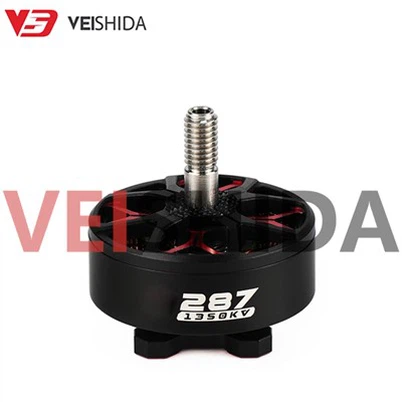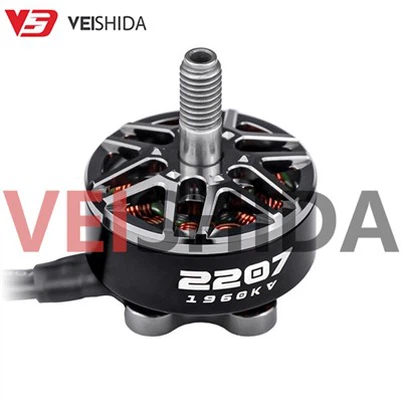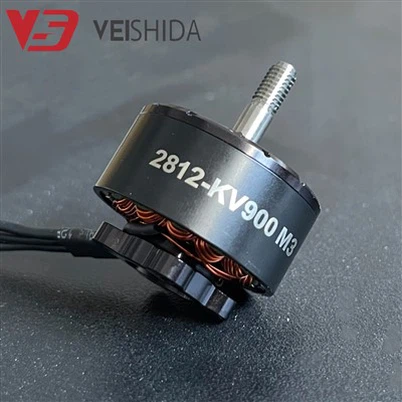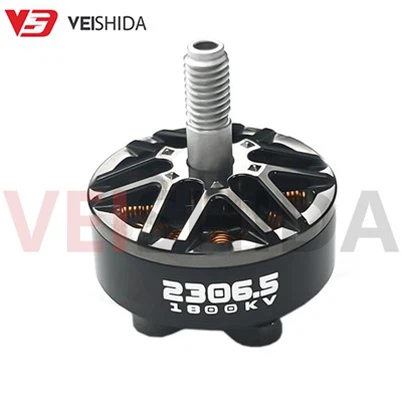Is the Drone Motor Clockwise or Counterclockwise
Leave a message
Why should you care about the direction of rotation of the motor
The seemingly simple motor rotation actually plays a key role in ensuring the drone's flight stability.
Many beginners wonder when assembling a drone: "Are all motors the same? Does their rotation direction matter?"
It is very important. If the direction is wrong, the drone may not be able to fly at best, or even spin, flip, or crash at worst. The direction of the motor not only affects the direction of thrust, but also affects whether the flight control system can work properly.
In this article, we'll take you through a quick guide to:
What do CW and CCW on the motor stand for?
Why can't the motors all turn in the same direction?
How to determine and adjust the rotation direction of the motor?
How to pair the right propeller?
After reading this article, you will no longer be confused by the direction of rotation. Even if it is your first time to assemble a machine, you can successfully complete the construction of the power system.

What does CW and CCW mean
In the parameters of drone motors, you will often see two abbreviations: CW and CCW. These two words represent the direction of rotation of the motor:
CW (Clockwise): Rotate clockwise
CCW (Counter Clockwise): counterclockwise rotation
This naming is not arbitrary; it's based on the direction in which the motor shaft rotates when viewed from above.
Why do we need to distinguish between CW and CCW?
In a quadcopter, in order to keep the aircraft in a balanced posture, the four motors are usually arranged in a staggered manner with two CW and two CCW, with the diagonal directions in the same direction:
|
M1 (front left): CW |
M2 (front right): CCW |
M3 (rear right): CW |
M4 (rear left): CCW |
The purpose of this layout is to allow the opposing torques generated by the motors to cancel each other out, thus preventing the fuselage from rotating on its own during flight.
Tip: The motor numbering may be slightly different for different flight control systems (such as Betaflight, PX4, etc.), but the CW/CCW interleaving principle is the same.

How to determine the direction of motor rotation? (3 practical methods)
Confirming the rotation direction of the drone motor is a very important step in assembly and debugging. Here are three simple and practical methods to help you quickly determine the direction of the motor.
1. Visually observe the motor idling direction
Power on the motor and let it idle (be careful not to touch the shaft and propeller with your fingers), and observe the direction of rotation of the motor shaft.
Viewed from the top of the motor (shaft head), clockwise rotation is CW and counterclockwise rotation is CCW.
It is recommended to use a mobile phone to record slow motion playback to help determine the rotation direction more accurately.
2. Use small pieces of paper or thin lines to assist observation
If the motor is spinning very fast and you cannot see the direction of rotation clearly, you can stick a small piece of lightweight paper or tie a small piece of thin wire to the motor shaft or propeller tip.
The strip of paper or string swings in the direction of rotation, making it easier to identify the direction of rotation.
When sticking, make sure to fix it firmly to avoid it flying out and hurting people.
3. Check via flight controller or configuration software (such as Betaflight)
Most modern flight control systems support testing motor steering in the software interface.
Connect the flight controller to your computer and open Betaflight Configurator or similar software.
Enter the "Motor Test" interface, start the motors one by one and observe the rotation direction.
There is a corresponding steering adjustment function in the software. If you find that the direction is wrong, you can adjust it directly or correct it through the hardware exchange line.

How to pair propellers with CW/CCW motors
The direction of the propeller must strictly match the direction of rotation of the motor to generate the correct thrust and help the drone take off stably.
Different direction motors are matched with corresponding direction propellers
CW (clockwise) motors need to be paired with propellers that rotate clockwise, also called CW propellers.
The CCW (counterclockwise) motor needs to be paired with a propeller that rotates counterclockwise, also called a CCW propeller.
The leading edge (blade edge) of these two types of blades is oriented differently:
The leading edge of a CW propeller is on the right side (the blade is tilted to the right when viewed from the center of the blade).
CCW paddle leading edge on the left
What are the consequences of mismatching blades?
If you install a CW propeller on a CCW motor (or vice versa), the resulting thrust will be reversed, which can cause:
The drone cannot take off normally
The fuselage will drift severely or even flip over.
The flight control adjustment fails and the flight is extremely unstable
How to quickly identify the direction of the blades?
1. Look at the logo on the blade
Many paddles will have "CW" or "CCW" printed on them.
2.Observe the shape of the blade
The CW blade is tilted to the right and pushes the air downward when it rotates clockwise.
The CCW blades are tilted to the left and push the air downward when they rotate counterclockwise.
3.Feel the rotation
Pick up the propeller to simulate rotation and feel the direction of air resistance. The propeller that pushes the air in the direction of rotation is in the corresponding direction.
Correctly matching the propellers and motor rotation direction is a key step to ensure the safety of drone flight. Don't ignore this!

How to adjust the rotation direction of the motor?
During drone assembly and maintenance, it's sometimes necessary to adjust the motor's rotation direction to ensure that it matches the design requirements and propeller direction.
Two common methods for adjusting the rotation direction of brushless motors (BLDC)
1. Swap any two of the three phase wires
Brushless motors usually have three phase wires connected to the electronic speed controller (ESC). By swapping the connection order of any two of the wires, the direction of the motor's rotation can be reversed.
For example, by swapping line A and line B, the motor's rotation direction will change from clockwise to counterclockwise, and vice versa.
2. Use the ESC software to set
Modern intelligent ESCs such as BLHeli, KISS, Hobbywing, etc. support adjusting the motor rotation direction through software.
Connect the ESC to the computer and open the corresponding configuration software.
Select the function of reversing the motor rotation direction in the debugging interface.
Suitable for use when the motor wires are fixed or welded and cannot be physically replaced.
Things to note after direction adjustment
Each time you adjust the motor rotation direction, be sure to reconfirm that the propeller direction matches.
Wrong propeller direction combined with wrong rotation direction will cause the drone to fly abnormally.
After the adjustment is completed, it is recommended to perform a ground rotation test and a low-altitude hovering test to ensure that the motor and propeller blades are working properly.
Correctly adjusting the motor rotation direction is a basic operation to ensure the flight stability and safety of the drone, and it must not be ignored.

VSD motor rotation design and debugging support
As a professional Drone Motor manufacturer, VSD is well aware of the importance of motor rotation direction to flight safety and performance. Therefore, it provides comprehensive rotation direction support and customized services in design and production.
VSD motor supports CW/CCW bidirectional configuration
All motor models support two rotation directions: clockwise (CW) and counterclockwise (CCW), which is convenient for different drone layout requirements.
The rotation direction can be pre-set according to customer requirements at the factory to ensure that it is ready for use after delivery.
Complete factory identification and technical support
Each motor can be equipped with a clear rotation direction mark for easy identification and installation.
At the same time, matching ESC matching suggestions are provided to ensure that users can easily adjust the motor rotation direction.
We can provide detailed rotation test reports to help customers complete strict quality verification.
Customizable thread direction for increased safety
To prevent the nut from loosening under high-speed rotation, VSD provides customized options of CW nuts and CCW nuts to ensure that the nut is tightened in the direction of rotation.
This design significantly enhances flight safety and simplifies maintenance.
Welcome OEM/ODM cooperation
VSD has a complete production and technical team that supports mass customized production to meet the diverse rotation and installation requirements of different platforms.
We are committed to providing high-quality and reliable power solutions to drone manufacturers around the world.







